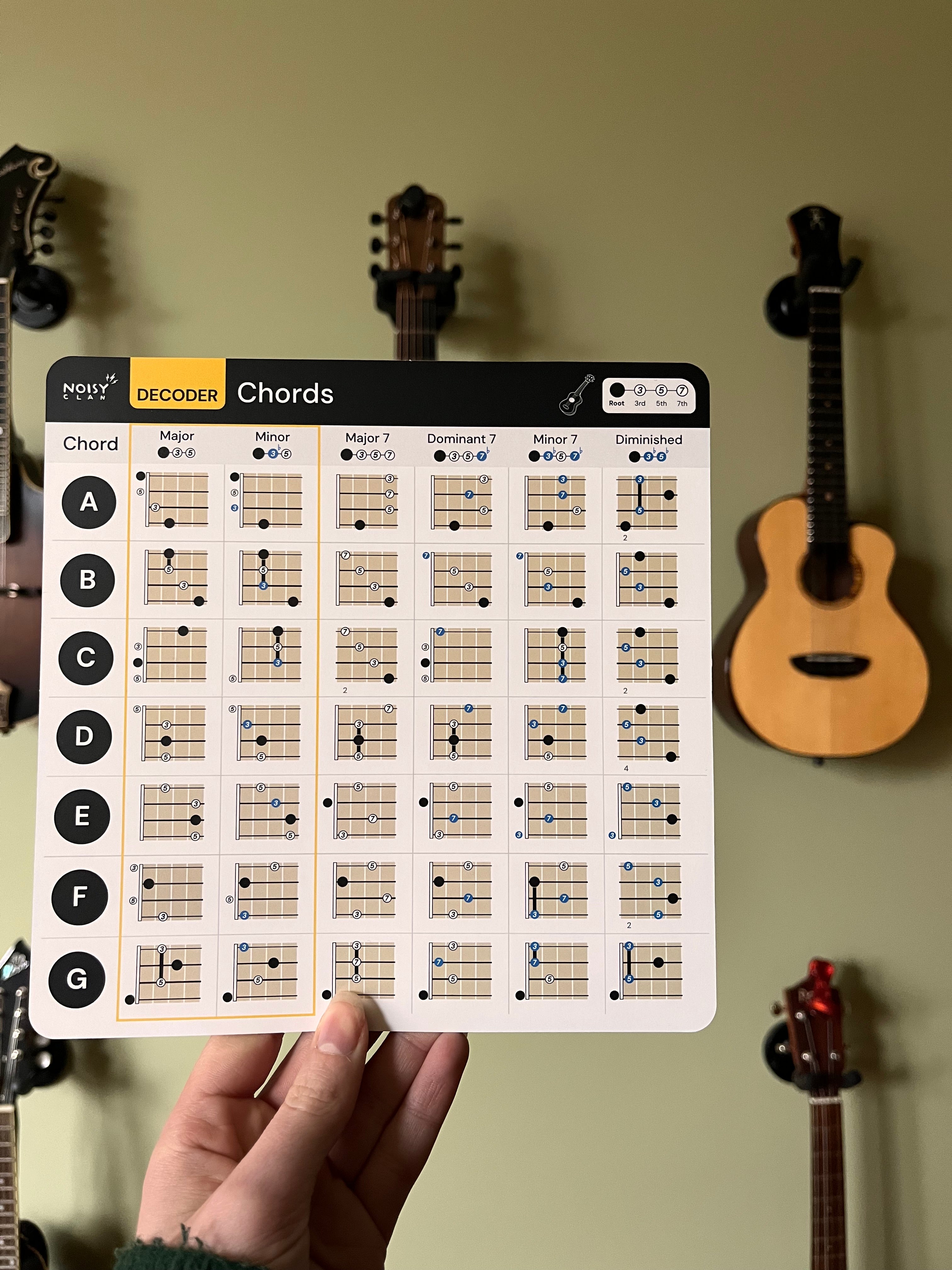Welcome to your first blog instalment of our Cheat Sheets for Ukulele. Let's talk about all things Chords! The building blocks to any awesome chord progression, songwriting session, or soloing compilation. We’re going to go over what chord charts are, how to read them, why we designed ours differently, and, how to apply these skills to your playing.
Understanding the Basics
The layout:
A typical ukulele chord chart consists of four vertical lines, each representing a string on the ukulele. The horizontal lines represent the frets.
For example, this is A minor:

However (to make this slightly more complicated), Noisy Clan’s Ukulele Chord Chart reverses everything I just said. So the strings are represented horizontally, and the frets vertically. The reason for this is simple, it just feels easier to read.

So, this is how A minor looks on our chord chart:

Another important aspect I should acknowledge is that our chord chart (purposefully) does not show the finger position for each chord. We believe showing the actual structure of the chord gives extra value. As a result, we are teaching you how and why it works, not just to play chords that sound nice.
How to Read a Chord Chart
Now that we've covered the basics, let's delve into the process of reading a ukulele chord chart.
- Circles to the left of the nut are open strings, circles to the right of the nut, on the fretboard, should be fretted.
- The dots correlate to which chord you need to play. The black dot will always refer to the root.
- Barre Chords: A barre chord is a chord which involves the index finger barred across two to four strings on the same fret, essentially creating a new nut. So all the chords using a barre chord will not have a nut in the graphic. For example, here is B Major:

Two Ways to Use Noisy’s Chord Chart:
-
The first way to use it as a reference tool to play a particular chord. For instance, if you want to play B minor you would find this chord in the table and fret the notes shown.
-
The second way is to look at the symbols shown in the circles in order to understand the structure of different chords. The major chord is made up of three notes (some are repeated in the chord) 1 - 3 - 5.
1 is our root note, denoted as a solid black circle. 3 is the third note in the major scale for each key, and 5 is the 5th note in the major scale for each key. When played together we get a major chord.
The other types of chord e.g. minor/diminished/7 are shown in relation to the major chord. For example, to make a chord minor we must flat the 3. We highlight this by making the symbol blue. This principle applies to the rest of the chords, and you can follow the chord formulas at the top of the table to keep you right.
You can download our FREE Ukulele chord chart here - it’s time to Play More!








